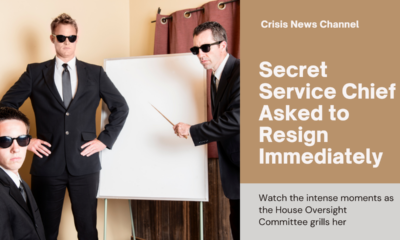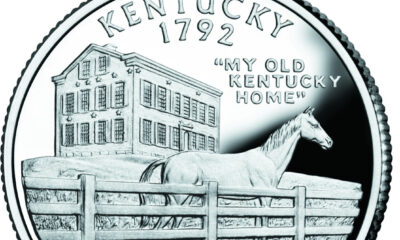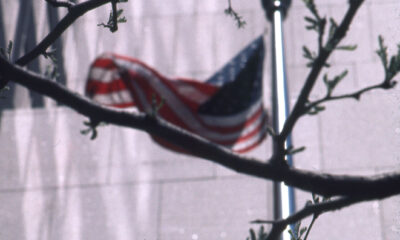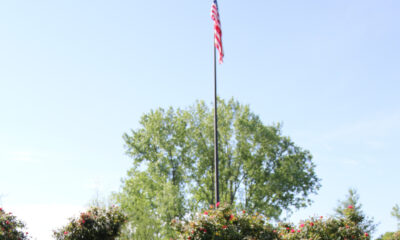Clergy
The Boy Scouts are no more
Yesterday came the final announcement that the Boy Scouts of America, as your editor knew it, has now died. In its place is a bastardized outfit calling itself Scouting America, which pours contempt upon Scouting’s former ideals. That same elite who wants depopulation enticed the Boy Scouts to permit the “unnatural acts” which God forbids. For this gross and blatant violation of Point Twelve of the Scout Law, God visited bankruptcy on the organization. Now, with a misguided emphasis on building membership at the expense of ideals, Scouting America has embraced Diversity, Equity and Inclusion – in a word, Woke-ism. But God is as Providential as He is Just – meaning that an alternative exists, and has existed for a few decades.
History of the Boy Scouts
Contrary to popular belief, Scouting began spontaneously when boys, and then girls, made a bestseller of a military training manual for the British Army. Robert Baden-Powell, afterwards Baron Baden-Powell, wrote Aids to Scouting for Non-commissioned Officers and Men in 1899. Upon his return from the Boer Wars, Baden-Powell found that his manual had captured the imagination of boys. So well did boys love it that several youth organizations were using it for training. So Baden-Powell rewrote this manual for boys, and in 1907 held a camp to test the practicality of his ideas. Twenty boys showed up, and the experiment was, by all accounts, a success. In 1908 Baden-Powell published Scouting for Boys in six installments. Scouting, properly speaking, began with that work.
Then in 1909, an American named William D. Boyce traveled to London and got lost in its notorious fog. One of Baden-Powell’s Scouts helped him find his way, then refused a tip from him. “I am a Scout,” he said, “and Scouts do not accept gratuities for courtesy or good turns.” Boyce, curious, asked this “Unknown Scout” for details, and eventually accompanied the boy to Scout Headquarters. He never got the boy’s name (hence “Unknown Scout”), but he met Baden-Powell and from him learned the really salient details. Returning to America, Boyce founded what became the Boy Scouts of America, or BSA. Incidentally they memorialized that Unknown Scout with a prominent plaque.
Divisions
In its beginning, the BSA had three divisions. Cub Scouts included boys from ages five through ten. Originally, Boy Scouts included boys from ages 11 through 18 inclusive. Explorers was available from ages 14 through 21; it was called Venturing at the time of the bankruptcy. The BSA also had Sea Scouting, an Explorer-like program focusing on nautical and maritime activities.
The age ranges for Boy Scouts and Explorers, of course, depended on the “old” age of majority of 21. Perhaps the Explorers, or Venturers, started to die out after America’s legislatures ratified Amendment XXVI, which lowered the voting age to 18. From that time forward, anyone 18 or older was considered an adult.
Precepts
Your editor joined the Boy Scouts at the age of 11 and stayed in it to become an Eagle Scout. As such he knows first-hand the precepts and tenets of Scouting. They are the:
Scout Oath, with its three points: duty to God and country, duty to other people, and duty to self. But that duty to self specifically focused on physical, mental, and moral fitness.
On my honor, I will do my best:
To do my duty to God and my country, and to obey the Scout Law,
To help other people at all times, and
To keep myself physically strong, mentally awake, and morally straight.
“Scout’s Honor” became a byword, and still was when your editor was part of Scouting.
Scouting reinforced this Oath with the classic hand gesture, the Scout Sign. The three middle fingers, extended, stand for the three points. Thumb and little finger, arched over the palm, signify the binding nature of the Oath. This Sign is also part of the Scout Salute. One executes this exactly like a regular American military salute, except with the right hand forming the Scout Sign. Likewise the Scout Handshake – with the left hand, close to the heart – features three extended fingers.
Scout Law, with its twelve points. Any Scout learned to recite those points as follows:
A Scout is trustworthy, loyal, helpful, friendly, courteous, kind, obedient, cheerful, thrifty, brave, clean and reverent.
Scout Motto: “Be Prepared.” A Scout must prepare for any contingency, not only in camp (a regular activity) but in “regular” life.
Scout Slogan: “Do a Good Turn Daily.” A commitment to a daily favor to at least one person, accustomed a Scout to do such minor favors frequently and as a part of good civil life.
The education program of the Boy Scouts
The Boy Scouts was a comprehensive extracurricular education program for boys. Scouting had an organizational structure that included:
- Patrols (with fellow Scouts to lead them),
- Troops (with both adult and “junior” leaders), and
- Councils, that Scouting organized by region.
It had a rank structure that originally had six ranks. (Scouting added another introductory “Scout” rank in the early Seventies.) The six ranks, and the required skills to attain each, were:
Tenderfoot: precepts of Scouting as above, plus knot-tying and other elementary woodcraft skills.
Second Class: hiking skills, from endurance to intelligent choice of supplies to mapmaking, trailing, tracking, and even stalking. Second Class Scouts also received an introductdion to first aid, which emphasized the “Hurry Cases”: external hemorrhage, pulmonary arrest (later cardio-pulmonary arrest), and internal poisoning.
First Class: camping skills, from packing, carrying a backpack, making and striking camp, to cooking and “camp policing.” A Scout always learned to leave nature better than he found it. The Boy Scout Handbook included this couplet:
Let no one say, and say it to your shame, / that all was beauty here until you came.
A First Class Scout got his introduction to Merit Badges, awarded for mastering skills in about a hundred skill sets. These varied from essential outdoor skills to hobbies and household skills and thus gave Boy Scouts ample opportunities for excellence.
The Advancement Trail to Eagle
A Scout would then progress through three more ranks: Star Scout, Life Scout, and Eagle Scout. To achieve each rank, the Scout had to earn a certain number of merit badges, serve as a troop officer, and perform some kind of community or environmental service. The merit badge numbers were five for Star, ten for Life, and twenty-one for Eagle.
Scouting required eleven specific merit badges of all who hoped to become Eagle Scouts. They were:
- Camping,
- Citizenship in the Community,
- Citizenship in the Nation,
- Conservation of Natural Resources,
- Cooking,
- First Aid,
- Lifesaving (in the water),
- Nature,
- Personal Fitness,
- Safety, and
- Swimming.
Troop officerships usually had to last for three months – except that rising Eagle Scouts needed to serve for six months. Community service projects needed to have ever higher levels of sophistication and effort. A typical Eagle Scout service project could easily occupy an entire summer, or longer. (Your editor collected used uniforms and equipment for donation to inner-city troops in his city.)
Troops held at least three kinds of awards ceremonies:
- Investiture, to induct new Scouts,
- Court of Honor, to award merit badges and recognize most rank advancement, and
- Eagle Scout Court of Honor, to recognize new Eagle Scouts.
An Eagle Scout didn’t have to stop earning merit badges. Scouting created the Eagle Palms to recognize Scouts who earned merit badges beyond the twenty-one required of an Eagle Scout.
The Order of the Arrow
In your editor’s day, Scouting had the Order of the Arrow. Members of a Scout’s troop would regularly nominate those of their fellows whom they considered the best fellow Scouts they would want to have in their camp, for safety or other reasons. Then at a multiple-troop gathering, often in a Council summer camp, several burly Order members, dressed in Native American costume, would snatch a nominee out of his seat and hustle him to the front of the assembly. There the brawniest member of the Order would tap him three times on the shoulder. Order members would march them off to inform them of plans for the next requirement: the Ordeal. This was a twenty-four-hour experience of the most rigorous camping imaginable – with one meal consisting of bread and water. Ordeal participants typically would clear a forest of deadwood or perform another such task.
If someone went through Scouting and never “made Order of the Arrow,” he could, as an Adult Scouter, stand for nomination again. Many Assistant Scoutmasters entered the Order of the Arrow that way. (A Scoutmaster led a troop, and would have any number of Assistants – all called Adult Scouters.) indeed, your editor witnessed father and son entering the Order on the same occasion.
The unraveling
In the later years of the Boy Scouts of America, that organization neglected to “vet” its Adult Scouters as carefully as they should have. Consequently, several men with Alphabet Soup – and pedophilic – bents entered the program. And they took advantage of the Scouts in their troop, in camp. That created a national scandal, despite a Supreme Court ruling that the BSA could set whatever leadership criteria they wished. Boy Scouts of America v. Dale, 530 U.S. 640 (2000). The BSA, beginning in 2012, made a series of disastrous decisions, including:
- Allowing adult males with Alphabet Soup tendencies to become Adult Scouters, therefore Scoutmasters and Assistant Scoutmasters,
- Similarly allowing Alphabet Soup youth to join, and
- Admitting girls to their ranks, this although girls had a Girl Scouts organization they could join just as well.
In 2018, the BSA went bankrupt, or nearly so, as parents took their boys out or refused to enroll them. Now emerging from bankruptcy, the organization has changed its name. It will now call itself Scouting America, beginning February 8, 2025 – the 115th anniversary of its founding.
This will not save the organization, and will now add disgrace to insolvency. What part of “A Scout is reverent” the leadership fails to understand, is beyond the comprehension of this Eagle Scout.
Be not deceived; God is not mocked. Galatians 6:7
An alternative to the Boy Scouts
Again, God is as Providential as He is Just and Uncompromising. Since 1940, an alternative organization has existed: the Christian Service Brigade. Joseph “Uncle Joe” Coughlin founded it then, after three years of taking boys on camping trips and inspiring other adult male leaders to do the same. Christian Service Brigade serves churches and the boys who go to them, It has four levels of membership, in order of increasing age:
- Tree Climbers, for Grades K-2,
- Stockade, for Grades 3-6,
- Battalion, for Grades 7 up to high school seniors, and
- The Herald of Christ program, mainly a internship program for young adult males, though older adults may also participate. Some describe Heralds of Christ as the counterpart to Eagle Scouts.
The original Scouting movement invited boys of all faiths – though one of the disastrous BSA decisions was to admit atheists and agnostics, too. But Christian Service Brigade is for Christians only. Perhaps on that account, CSB will never made the kind of disastrous decisions that undid the Boy Scouts of America.
Scouting once had another unofficial motto: “once a Scout, always a Scout.” Sadly, those of us who did Scouting in the old days are now Scouts without an outfit. Christian Service Brigades have not – yet – announced a program to “transition” Boy Scout Troops into CSB Brigade units. Perhaps they should, for the sake of the boys, and the country.
Terry A. Hurlbut has been a student of politics, philosophy, and science for more than 35 years. He is a graduate of Yale College and has served as a physician-level laboratory administrator in a 250-bed community hospital. He also is a serious student of the Bible, is conversant in its two primary original languages, and has followed the creation-science movement closely since 1993.
-

 Executive4 days ago
Executive4 days agoSecret Service chief gets no solace
-

 Executive3 days ago
Executive3 days agoWaste of the Day: Louisville Taxpayers Pay Nearly $600,000 For Empty Building’s Maintenance, Security
-

 Guest Columns4 days ago
Guest Columns4 days agoFear Itself: Democrats’ Favorite Strategy Caused Their Current Chaos
-

 Executive3 days ago
Executive3 days agoWhere is Joe Biden – or Jill?
-

 Executive1 day ago
Executive1 day agoWaste of the Day: Throwback Thursday: Cities Used Crime Prevention Funds on Soccer Games, Paper Shredding
-

 Executive2 days ago
Executive2 days agoFacile and politically motivated suggestions
-

 Civilization5 days ago
Civilization5 days agoBuild Iron Dome in the United States To Prepare for Israel’s Worst Day
-

 Executive4 days ago
Executive4 days agoThe Emerging GOP Plan To Beat Kamala Harris








